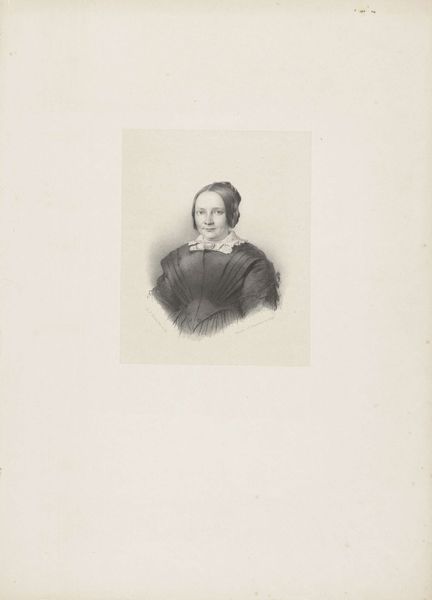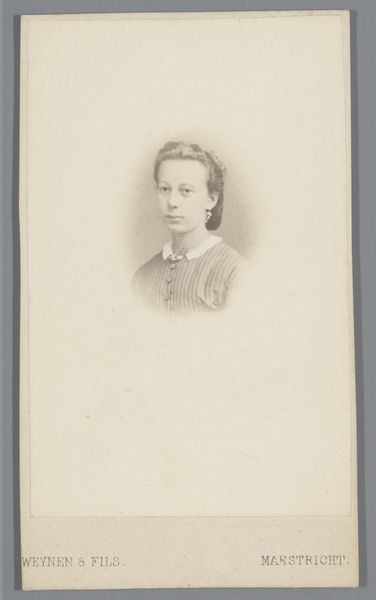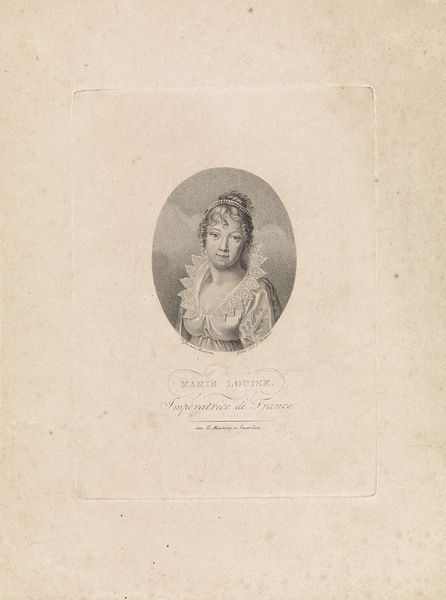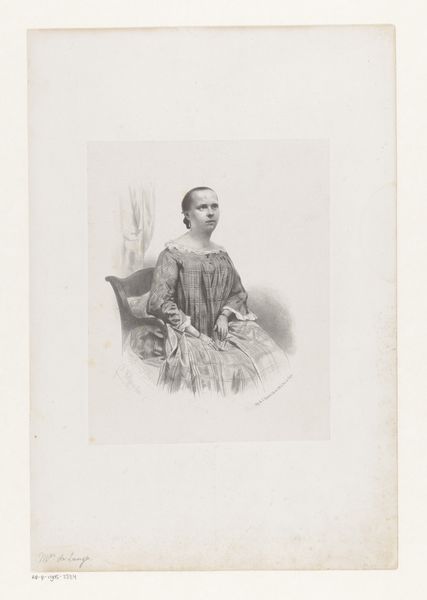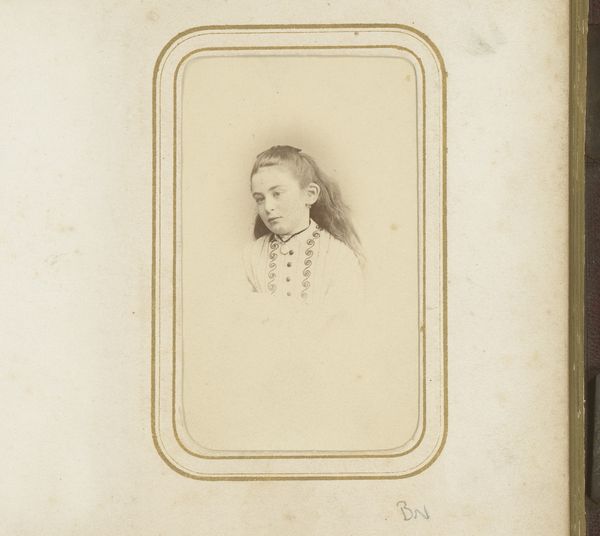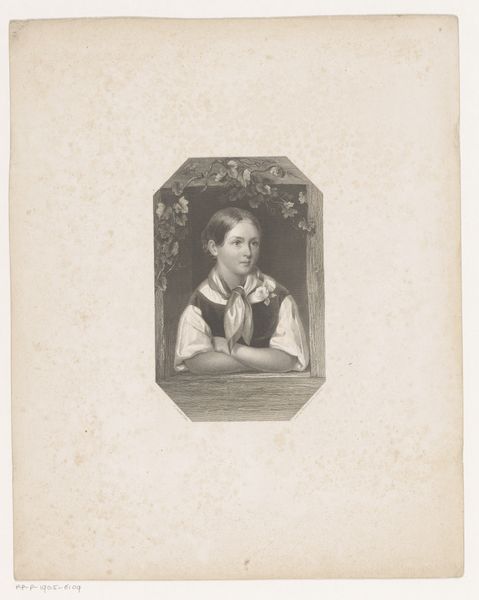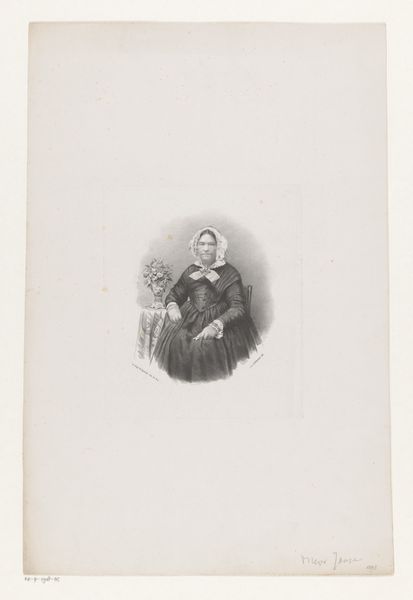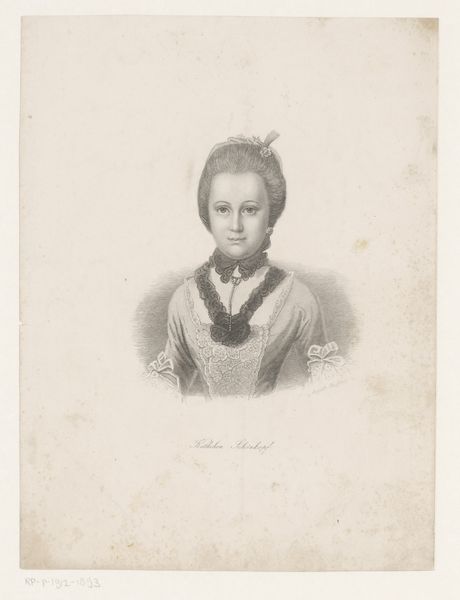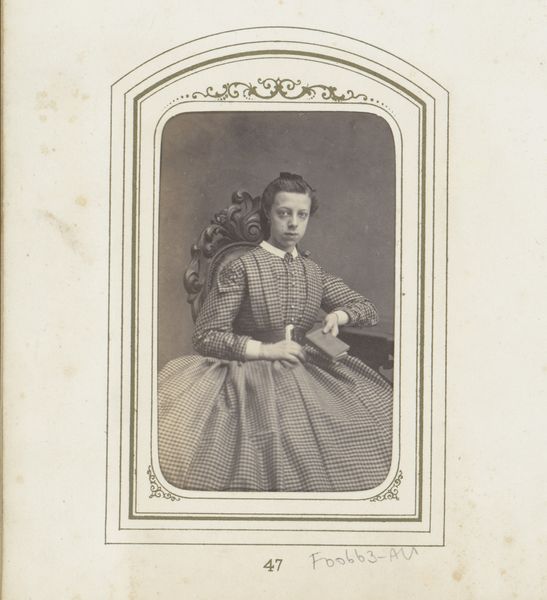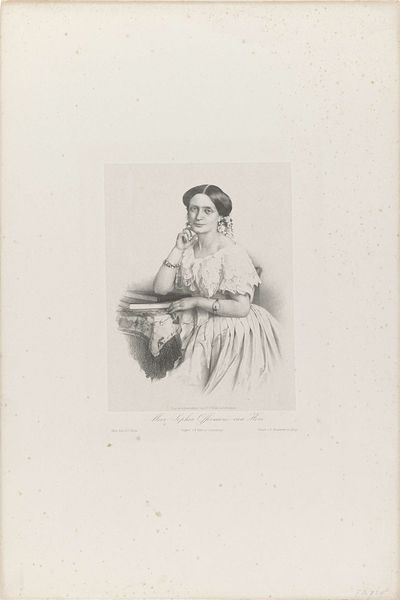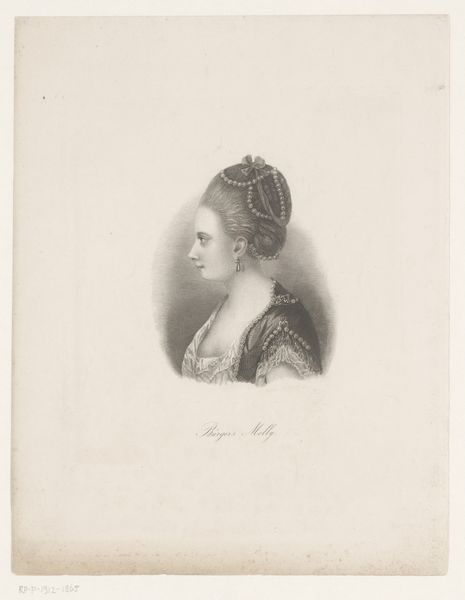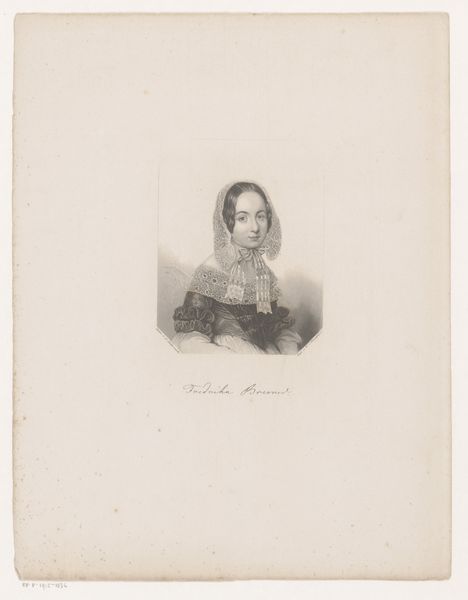
Dimensions: height 135 mm, width 94 mm
Copyright: Rijks Museum: Open Domain
Curator: We're looking at "Portret van Louise van Pruisen," a neoclassical-style portrait, possibly from sometime between 1850 and 1930. It appears to be rendered using a combination of pencil and engraving techniques, resulting in a rather delicate print. Editor: My first impression is how fragile the work appears, both physically and emotionally. There's something haunting in her young gaze, intensified by the precise, almost brittle lines of the engraving. Curator: Engravings, especially during that era, had a way of monumentalizing the subject, but there's a contrasting informality here. Louise's youth complicates that formality; portraits of children often served very specific dynastic functions. How might this image speak to those socio-political contexts? Editor: Considering Louise’s youth, the composition evokes Victorian notions of innocence juxtaposed with royal power. Her posture hints at a performed regality that sits uncomfortably on a child. One could read this image as an early meditation on gender and social roles, setting her within a web of expectations even at this age. Curator: And of course, these types of portraits were widely disseminated, fulfilling the role of propaganda, defining what an ideal monarch should be through carefully constructed imagery. Editor: The question, I suppose, is what “ideals” were projected here and for whom? We should question whose standards of beauty and worthiness this portrait promotes. Was this made for the consumption of her relatives, the public or herself? Does this reflect on Prussian attitudes toward leadership and the performativity of being in control? Curator: Absolutely. That understanding, I believe, shifts our understanding from aesthetics alone into broader conversations of the mechanics of power. Editor: Right. What looks like a simple portrait unravels into layered narratives about authority and control. Curator: Seeing it through those frames offers so much insight into the period. Editor: Indeed. Considering the portrait this way prompts us to consider the interplay of personal identity and public image throughout history.
Comments
No comments
Be the first to comment and join the conversation on the ultimate creative platform.

